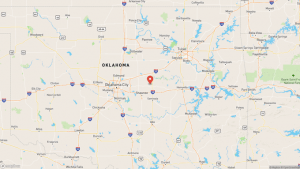A volcano erupted on Spain’s Atlantic Ocean island of La Palma erupted on Sunday, sending a plume of smoke and ash into the air and also prompting evacuations. The Canary Islands Volcanology Institute said the eruption took place on Cumbre Vieja, which last erupted in 1971.
Videos doing the rounds on social media showed lava shooting into the sky and plumes of black-and-white smoke across the island.
The eruption comes following a weeklong buildup of seismic activity. Over 22,000 tremors were reportedly felt this week in the Cumbre Vieja area.
Also Read: How Bitcoins will be mined in El Salvador through volcanoes
Authorities had begun evacuating people and some farm animals from the surrounding villages prior to the eruption and had also asked residents of the five other nearby villages to be on alert and ready to leave their homes in case of an eruption.
Immediately after the eruption, the residents were asked to “exercise extreme caution” and stay away from the area and off the roads.
Also Read: Mount Merapi erupted causing ash and hot gravel to rain down
A 3.8-magnitude quake was reportedly recorded before the eruption as vibrations from the seismic activity were felt on the surface. The Scientific Committee of the Volcano Risk Prevention Plan warned that stronger earthquakes “are likely to be felt and may cause damage to buildings.” Experts also noted that a stretch of the island’s southwest coast was at risk for landslides and rock falls.
Also Read: Philippines on alert after Taal volcano eruption sends thick haze over capital
La Palma is one of eight islands in Spain’s Canary Islands archipelago and has a population of 85,000. At their nearest point to Africa, they are 100 kilometers (60 miles) from Morocco.
The earliest recorded volcanic eruption in La Palma reportedly took place way back in 1430. In the eruption that took place 1971, one man was killed while he was taking photographs near the lava flows. No property damage was reported.






